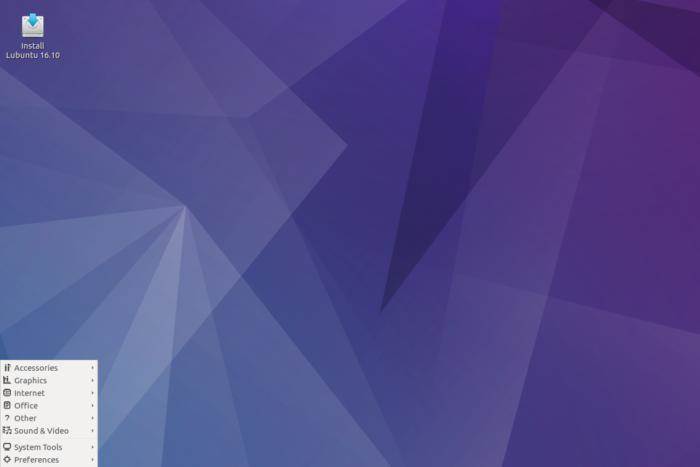Lubuntu breathes new life into older computers
When it comes to Linux distributions you generally don’t hear a lot about Lubuntu. However, this Ubuntu spin can be a great help to users with older computers who need a light-weight distribution that requires minimal hardware resources.
Here’s some background on Lubuntu from the Lubuntu Wiki:
The objective of the Lubuntu project is to create a variant of Ubuntu that is lighter, less resource hungry and more energy-efficient by using lightweight applications and LXDE, The Lightweight X11 Desktop Environment, as its default GUI.
Lubuntu is targeted at PC and laptop users running on low-spec hardware that, in most cases, just don’t have enough resources for all the bells and whistles of the “full-featured” mainstream distributions. Members of the team take care of LXDE and other packages that are part of Lubuntu. Lubuntu received official recognition as a formal member of the Ubuntu family, commencing with Lubuntu 11.10.
Even though Lubuntu is a lightweight distribution, it does not mean you will not be able to run all applications that other distributions are currently offering. It does mean that it is prepared and developed for low-specification computers. Nonetheless, you can run any application available in the official repositories, as long as your hardware can bear with it.
More at the Lubuntu Wiki
A Linux redditor named Augustinelille recently shared his enthusiasm about Lubuntu and how it brought his old laptop back to life:
Hey guys. I just want to show appreciation to the beauty that is Lubuntu. It has made a rusty laptop I bought three years ago for only $300 work well above all expectations, and I now use it as a tool for almost everything, especially school work.
Linux OS’es have also sparked alive a long lost interest I had in computers. I haven’t found anything IT orientated interesting since a looong time.
Ya, I should go doze off now.
Good night!
More at Reddit
His post about Lubuntu spawned a large thread and other Linux users chimed in with their thoughts:
Andys: “Lubuntu is also great on high-end hardware. Have been using it on my powerful workstation for years as well as old laptops!”
Podian: “Lubuntu is awesome, it works blazing fast in a VM on my desktop. Some time ago I was using Debian LXDE on a really ancient laptop (ThinkPad 600-something) and it was actually useable. So, I’m a huge fan of LXDE – it’s a full desktop environment that weighs almost nothing.”
Gorgamin: “I agree. Low memory footprint and low processor usage should be a priority on OSs.”
DestroyedAtlas: “I’m a sysadmin. I use Windows work (because I have to unfortunately), but I have a VM of Lubuntu I use via Virtualbox. Assigned 2 processors, and 2gb of ram. It works so damn well. I rarely see my Windows desktop. I can add more virtual monitors, or remove them (3 display setup) .
At home I use Ubuntu MATE. Linux these days is almost a treat to use after dealing with Windows for hours. No licensing issues. No forced updates. No having to use putty when I need to SSH into one of our nix servers. An actually useful command line. ”
Piece_Maker: “Lubuntu is a work of art! My dad’s computer completely died out a while ago, so we got given some old crusty mess of a machine by an in-law. The HDD was terrible, so my dad just ran Lubuntu off the CD for a few weeks to admin his website and tweak his Excel docs (Which were thankfully on an external HDD). It ran better than an actual-installed Windows, because of course it did.
Obviously not a permanent solution, and he got a new PC eventually, but the awesomeness of Linux stuck in his mind (This was his first experience with it) so the seed was planted 😀 ”
BinaryZomby: “Linux gives you control over your computer. I bought an old laptop recently and installed five different Linux flavours that I can choose from when booting. I’ve been using Lubuntu to teach some English lessons and it’s been great. BTW, LUbuntu and Mac Puppy were the fastest when it comes to booting.”
Iamalwaysangry: “Try Peppermint. Is lubuntu but optimized for old hardware.”
Manodactyl: “Totally agree, I’ve got it running on a 10 year old laptop that I threw a ssd into, runs like a dream. Tried A couple of different flavors of Linux and fell in love with lubuntu.”
More at Reddit
And here’s a review of Lubuntu 16.10 on YouTube:
Ars Technica reviews the System76 Oryx Pro
Many Linux users install their favorite distributions on their new laptops themselves. But you can also opt to buy laptops with Linux preinstalled, and one computer to consider is the System76 Oryx Pro. Ars Technica did a full review of the Oryx Pro and found it to be a pleasure to use.
Scott Gilbertson reports for Ars Technica:
The Oryx Pro is a pleasure to use day-to-day. The keyboard is nice, and, as mentioned above, the matte screen is wonderful. Adding a USB mouse to the package gave me a portable system (albeit a heavy one) fully capable of editing video at the coffee shop. I did get some looks from the generally Mac-centric crowd when I pulled out such a massive (next to a Mac laptop at least) machine, but it was only the power brick that elicited a “whoa” comment.
There’s another thing that sometimes comes up in reviews of System76 machines, namely that the same machine can be had for less money from another manufacturer like Clevo. It’s true that System76 purchases parts from other manufacturers, but that’s really a small part of what makes the Oryx Pro a pleasant Linux experience. If saving money is your top criteria, you might want to check out the Clevo version that specs out roughly the same on paper. However, that will not get you a machine with the firmware, drivers, and hardware components that System76 uses to build fully Ubuntu-compatible machines (and by extension, Linux more generally).
If you want hotkeys, touchpad, audio jacks, keyboard backlighting, suspend, and all the other functions you take for granted to work out of the box with no fiddling on your part, you want to pay for the work System76’s engineers have put in. But in the end all hardware is a compromise, so the question is, which end of the spectrum do you want to compromise on?
If what you value is portability and extended battery life, and you only need enough RAM to run a Web browser (say, about 16GB), then the Oryx Pro might disappoint. At 7lbs (with power brick), the Oryx Pro is relatively large and heavy next to something like the Dell XPS 13. But you won’t get 64GB of RAM in an XPS 13, and you won’t get up to 9TBs of data storage space in an XPS 13.
The Good
- Wide range of configuration options
- RAM up to 64GB
- Storage space up to 9TB
- Excellent hardware support for Linux
The Bad
- It’s big and it’s heavy
- Battery life could be better
The Ugly
- The battery charger is massive and adds over a pound to the overall
weightMore at Ars Technica
Fedora Workstation 25 released
It’s always a big deal when there is a new version of Fedora, and now Fedora 25 Workstation has been released. You can download it from the Get Fedora site.
Matthew Miller reports for Fedora Magazine:
Providing many of the latest open source developer and desktop tools, Fedora 25 Workstation delivers a host of new features, including the long-awaited official debut of the Wayland display server. Replacing the legacy X11 system, Wayland has been under development for several years and seeks to provide a smoother, richer experience for graphical environments and better capabilities for modern graphics hardware. To further enhance ease-of-use, Fedora 25 Workstation also features GNOME 3.22, which offers multiple file renaming, a redesigned keyboard settings tool and additional user interface improvements. Workstation users will also be pleased with the inclusion of decoding support for the MP3 media format.
Fedora 25 Workstation now makes it easier to for Windows and OS X users to get started, with Fedora Media Writer serving as the default download for those operating systems. This tool helps users find and download the current Fedora release and write it to removable media, like a USB stick, allowing potential Fedora users to “test drive” the operating system from that media environment. Fedora can then be installed to their systems with the same process.
For current Fedora users, the upgrade path from Fedora 24 to Fedora 25 has been simplified and streamlined, with typical upgrades taking less than 30 minutes, depending on system configuration and network speed. Upgrades can be started from the command line or from the GNOME Software tool, just like regular security and bugfix updates.
For developers, beyond the new docker engine and language support included in the base Fedora 25 packages, Fedora 25 Workstation introduces improved Flatpak support. This tweak makes it easier to install, update and remove Flatpak software and enables this application packaging standard to be more user friendly at the workstation level.
More at Fedora Magazine
Did you miss a roundup? Check the Eye On Open home page to get caught up with the latest news about open source and Linux.
This article is published as part of the IDG Contributor Network. Want to Join?







